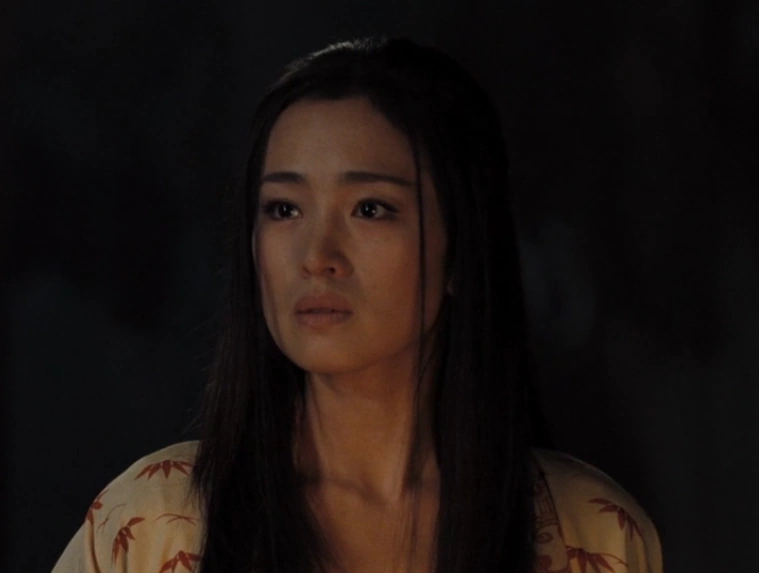

Thus, the lady provokes the jealousy of other imperial concubines, in particular that of the Kokiden Consort, a lady with well-founded hopes of becoming Empress. Her father, a Grand Counselor, is already dead at the beginning of the narrative, and her mother cannot provide her with political support.

: 112 The peak of Genji's glory, however, also announces his slow but inexorable decline, and chapters such as “Nowaki” and “Wakana” reveal his vulnerability in front of a new generation of young heroes, Yūgiri and Kashiwagi. In the realm of amorous relationships, the narrative follows Genji from his adventurous youth, a time in which he engages in multiple relationships with women of various ranks, to his mature years, when his political and erotic success is best reflected in his Rokujō-in mansion, a residence built to shelter the most important women in his life and to mirror the Imperial Palace (or at least its hidden quarters reserved to the emperor's female staff). Although demoted to commoner status (and forced to take the name of Minamoto), Genji rises in rank to the position of Honorary Retired Emperor and lives to see his children becoming Emperor, Empress and Minister, respectively. In the tale, Genji occupies center stage from chapters one to forty-one and the narrative focuses on his amorous exploits and political successes. Independently of Murasaki Shikibu's sources of inspiration, Hikaru Genji cannot be simply reduced to being a mere fictional reflection of a real historical figure. Some of the favorite candidates are Ariwara no Narihira (the hero of The Tales of Ise), Emperor Murakami, Sugawara no Michizane, Minamoto no Tōru or Fujiwara no Korechika. Many scholars have tried to decipher the real or fictional model behind the character of Genji. Prince Genji ( Hikaru Genji/ the Shining Genji/ the Shining Prince) – The eponymous hero of the tale, he is the son of an emperor (usually referred to as Kiritsubo Emperor) and of a low-ranking imperial concubine (known to readers as Lady Kiritsubo or Kiritsubo Kōi).Important characters are in capital letters. Some of the character descriptions below include a reference to the chapter in which the character is introduced to the narrative. However, this chronology does not take into account the first time a character is mentioned, but rather the time a character actually makes his or her debut into the tale. Murasaki Shikibu is no exception: "Murasaki" means "purple" and is likely derived from her character of the same name or her clan background, which used the wisteria as its flower, while “Shikibu” refers to a court position in the Bureau of Ceremonies ( shikibu) that her father used to occupy.įollowing Genji, all the other characters are introduced following the chronology of the events in the tale. Similarly, many women writers of the Heian period left behind their sobriquets alone. Genji, Murasaki, Akashi, Utsusemi, etc.), whereas Tyler’s, a more textually accurate translation, tends to change sometimes characters’ appellation with every chapter. Out of the two most recent translations into English, Seidensticker’s tends to systematically employ the same names (e.g. Lady Rokujō, whose mansion is on the Sixth Avenue, rokujō, or Fujitsubo, literally wisteria pavilion, the part of the Imperial Palace where this particular lady resided). Lady Akashi who lived on the Akashi coast before meeting Genji), or from the name of their residence (e.g. Murasaki takes her name from a poem by Genji), from the particular court positions they occupy (in the Tyler translation, characters are often referred to by such terms as His Highness of War, Her Majesty the Empress, His Grace, the Palace Minister and so on), from their geographical location (e.g.

Instead they are assigned sobriquets derived from poetic exchanges (e.g. The characters of The Tale of Genji do not possess birth names.

The Third Princess, a character from The Tale of Genji (ukiyo-e by Suzuki Harunobu, ca.


 0 kommentar(er)
0 kommentar(er)
